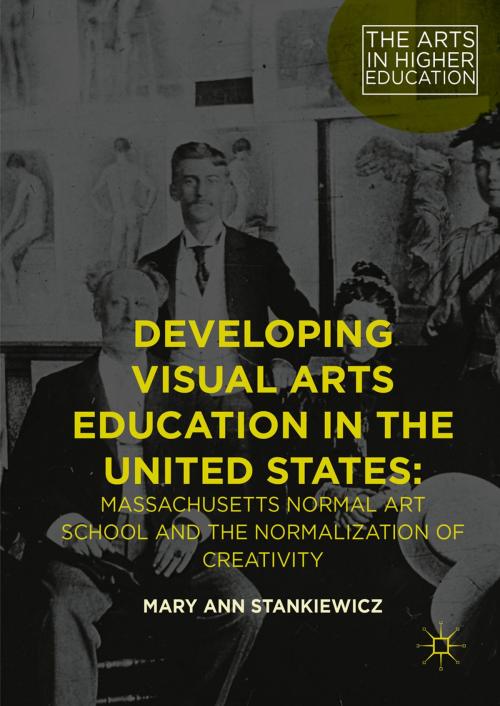Developing Visual Arts Education in the United States
Massachusetts Normal Art School and the Normalization of Creativity
Nonfiction, Reference & Language, Education & Teaching, Higher Education, Teaching, Teaching Methods| Author: | Mary Ann Stankiewicz | ISBN: | 9781137544490 |
| Publisher: | Palgrave Macmillan US | Publication: | June 15, 2016 |
| Imprint: | Palgrave Macmillan | Language: | English |
| Author: | Mary Ann Stankiewicz |
| ISBN: | 9781137544490 |
| Publisher: | Palgrave Macmillan US |
| Publication: | June 15, 2016 |
| Imprint: | Palgrave Macmillan |
| Language: | English |
This book examines how Massachusetts Normal Art School became the alma mater par excellence for generations of art educators, designers, and artists. The founding myth of American art education is the story of Walter Smith, the school’s first principal. This historical case study argues that Smith’s students formed the professional network to disperse art education across the United States, establishing college art departments and supervising school art for industrial cities. As administrative progressives they created institutions and set norms for the growing field of art education. Nineteenth-century artists argued that anyone could learn to draw; by the 1920s, every child was an artist whose creativity waited to be awakened. Arguments for systematic art instruction under careful direction gave way to charismatic artist-teachers who sought to release artistic spirits. The task for art education had been redefined in terms of living the good life within a consumer culture of work and leisure.
This book examines how Massachusetts Normal Art School became the alma mater par excellence for generations of art educators, designers, and artists. The founding myth of American art education is the story of Walter Smith, the school’s first principal. This historical case study argues that Smith’s students formed the professional network to disperse art education across the United States, establishing college art departments and supervising school art for industrial cities. As administrative progressives they created institutions and set norms for the growing field of art education. Nineteenth-century artists argued that anyone could learn to draw; by the 1920s, every child was an artist whose creativity waited to be awakened. Arguments for systematic art instruction under careful direction gave way to charismatic artist-teachers who sought to release artistic spirits. The task for art education had been redefined in terms of living the good life within a consumer culture of work and leisure.















